Dive Destinations
Liveaboards
Resorts / Day Trips
Scuba Training
...Highlights: shark action, turtles, schooling fish & big pelagics...
...Diving environment: healthy reefs, drift diving, walls, wrecks, advanced divers, very popular...
The Straits of Tiran are one of the main highlights for reef diving in the Northern Red Sea. The reefs are home to groupers, turtles, snappers, surgeonfish and unicornfish, and the strong currents and abundant coral growth attract predators such as barracuda, tuna, trevallies and shark species such as hammerheads, whitetip reef and grey reef sharks, leopard sharks, and even tiger sharks. Experienced divers love this area because each dive can be a whole new adventure.
The Straits lie at the mouth of the Gulf of Aqaba and run between Tiran Island and the Sinai Peninsula. There are 4 reefs in the channel - Gordon, Thomas, Woodhouse and Jackson - which were named after the British cartographers who first mapped the area. The reefs divide the channel in to 2 passages – Enterprise Passage (max depth 250m) to the west is used for ships heading south, and Grafton Passage (max depth 70m) to the east is used for ships heading north. It is the presence of these 2 relatively shallow passages that cause the unpredictable strong currents that characterise the diving here.
The Straits of Tiran are of key geo-political importance as they divide the Gulf of Aqaba from the Red Sea proper. The Gulf of Aqaba is home to Jordan’s only sea port (Aqaba) and to Israel’s only Red Sea port (Eilat). Tiran Island and neighbouring Sanafir Island are now part of Saudi Arabia and going ashore is not permitted. The closure of the straits lead directly to military tensions in the 6 Day War and Israel’s occupation of the Sinai Peninsula in 1967. It is said that Tiran still has many undetonated land mines.
Jackson Reef,is the furthest north of the reefs in the Straits of Tiran and has some of the best coral coverage. Its walls are among the finest in the whole Sinai region due to the strong currents that sweep nutrients in to feed the dense profusion of corals and fans, and also attract barracuda and trevallies.
The most frequently dived area is the southern side where there are sheltered moorings for boats from which you can descend down a 40m wall on to a seabed that houses a colony of garden eels. To the west is a saddle that adjoins to Woodhouse Reef. The southwest corner experiences very strong currents but if conditions allow, divers can drift along the eastern side of the reef. Here you can spot turtles and large pelagic fish, such as tuna, whitetip reef and grey reef sharks. Scalloped hammerhead sharks are especially common from July to September, as well as regularly sighted on the northern side. The shallows in the southern portion of Jackson Reef is a grooved sandy area, full of soft corals, where you can conduct your safety stop. Fish numbers here are prolific, with snapper, triggerfish and cornetfish.
On the northern side of Jackson Reef is only dived when the sea is calm, usually in the summer. It is a “blue water” dive to search for hammerheads. Here also lies the wreck of Lara at a depth of between 48+m – in the domain of tec divers only. It was a 137m long Cypriot merchant ship that sank here in 1982. The wreck was salvaged in 1996 and some sections remain on the surface of the reef, where she originally ran aground.
Woodhouse Reef is long and narrow, lying in roughly the same direction as the flow of the Straits of Tiran, i.e. a northeast-southwest aspect. This means there is no shelter or fixed moorings for dive boats, and diving here is a drift from south to north when sea conditions allow.
The most interesting part of the reef is the northern section of the eastern side, as surface conditions are usually worse on the western side. Here at 30m you will find a canyon that runs parallel to the main axis of the reef until it reaches a sandy ledge where you can sometimes seeing resting sharks. It is quite easy to see jacks, sea turtles, sharks and a great many anemones, and corals, both hard and soft, including some colonies of black coral that are at about 20-25m.
The sandy ledge then widens northwards at 14m, leading to a saddle that connect to Jackson Reef. The schooling fish life here is prolific, with fusiliers, snapper, surgeonfish and unicornfish, as well as passing big tuna and trevally. It is advisable to end your dive before the saddle, known locally as the Washing Machine, especially when the sea is choppy or strong currents are present.
Thomas Reef is the smallest of the reefs in the Straits of Tiran. It is very popular due to its vibrant colours and rich marine life. The lack of mooring points makes drift diving necessary here.
The southeastern section is the typical starting point, where you descend down a wall splendidly covered in gorgonians, whip corals and black corals, and arrive at a large ledge at 25m depth, where you can often find resting whitetip reef sharks and leopard sharks. Heading in an easterly direction, an extremely deep canyon opens out at 35m, running parallel to the reef for 80m and crossed by 3 impressive swimthroughs (The “3 Thomas Arches”) created by fallen rocks. This canyon is strictly for tec divers as it runs down to 90m. Look out for longnose hawkfish, boxfish and pipefish on the wall corals, and large bursts of anthias.
Elsewhere, the northern wall has some spits that allow divers some shelter from the frequent strong currents. The western wall has many crevices and caverns, and a wealth of marine life including sea turtles, lyretail cod, groupers, schooling reef fish and pelagics. However, sea conditions often make it impossible to pick divers up from here. It is possible to navigate the entire reef in a single dive, assuming there is no counter-current when approaching the northern part.
The southernmost reef in the Tiran Straits (and the closest to Sharm El Sheikh) is Gordon Reef, made up of a shallow plateau with a mooring and drop-offs that fan out from the centre. It is the easiest of the reefs to dive in terms of experience/ability levels, although currents can occasionally sweep over the plateau. The surface of the northern section is marked by the corroded wreck of the Panamanian freighter called the Loullia which ran aground in 1981.
One dive plan here is to swim off the plateau to the east and then head north, past a scattering of metal drums and a field of garden eels. Explore the drums for octopus and moray eels, in particular peppered and yellow-edged morays. Keep a look out for passing eagle rays and maybe some whitetip reef sharks as you drift along. Another dive plan is to forage around the plateau in search of nudibranchs. If you head to the edges of the plateau, you could find Napoleon wrasse and triggerfish.
Along the western side of Tiran Island is a shallow hard coral lagoon (10-12m), known as Laguna Reef. The lagoon is split in 2 by a hard coral wall – North and South Laguna – which are home to some superb coral structures. Its location in the Straits and its shallow nature make the area susceptible to strong tidal flows which dictate dive plans; usually the afternoon is the best time to dive here. The outer reef wall is home to a wreck called the Zingara (or Kormoran), which was a German freighter that sank here in 1984 and is an interesting dive when the conditions allow.
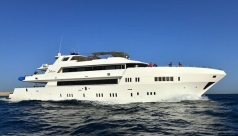
Customer rating: Excellent!

Customer rating: Excellent!

Customer rating: Excellent!

Customer rating: Excellent!

Customer rating: Excellent!

Customer rating: Excellent!

Customer rating: Excellent!
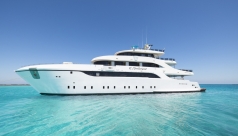
Customer rating: Excellent!
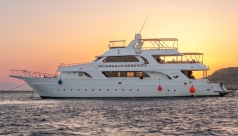
Customer rating: Excellent!

Customer rating: Excellent!

Customer rating: Very good!

Customer rating: Very good!

Customer rating: Very good!

Customer rating: Very good!

Customer rating: Very good!

Customer rating: Very good!
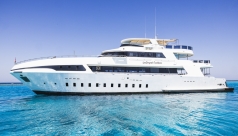
Customer rating: Very good!

Customer rating: Good

Customer rating: Good

Customer rating: Good

Customer rating: Good
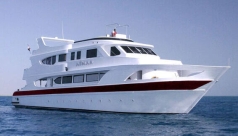
Customer rating: Good

Customer rating: Good
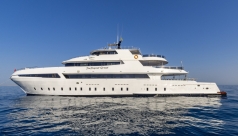
Customer rating: Good

Customer rating: Good

Customer rating: Good
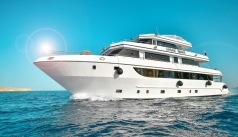
Customer rating: Good
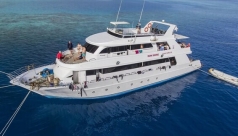
Customer rating: Good
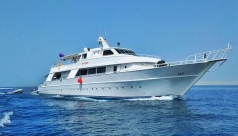
Customer rating: Average

Customer rating: Be first to rate!

Customer rating: Be first to rate!

Customer rating: Be first to rate!

Customer rating: Be first to rate!

Customer rating: Be first to rate!

Customer rating: Be first to rate!

Customer rating: Be first to rate!

Customer rating: Be first to rate!

Customer rating: Be first to rate!

Customer rating: Be first to rate!

Customer rating: Be first to rate!
5 - >40m
20 - 25m
Can be very strong
Can be rough
22 (Feb) - 28°C (Aug)
Intermediate - advanced
10
14 km (1½ hrs) northeast of Sharm El Sheikh
1-3 days
Found website with Google, from then on it was easy to navigate through. I consider myself lucky that I found space on liveaboard at my desired location on short notice and during a busy period (Easter vacations). I found booking very easy and quick. I liked to be able to pay via bank transfer (rather than credit card) and that you requested to use exchange rates by OANDA to pay in non US currencies. Thanks very much for your help to make my vacation an excellent experience!
